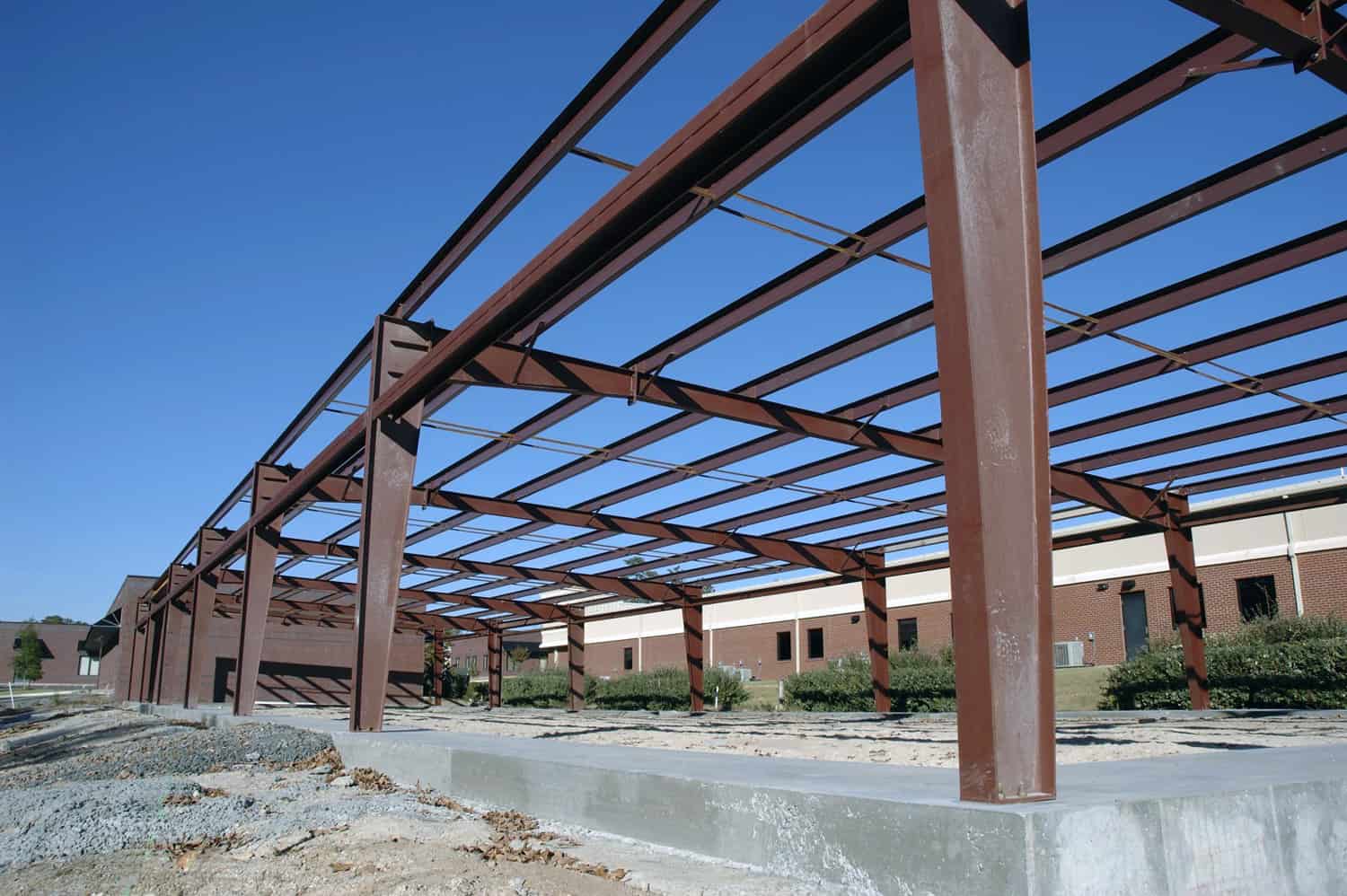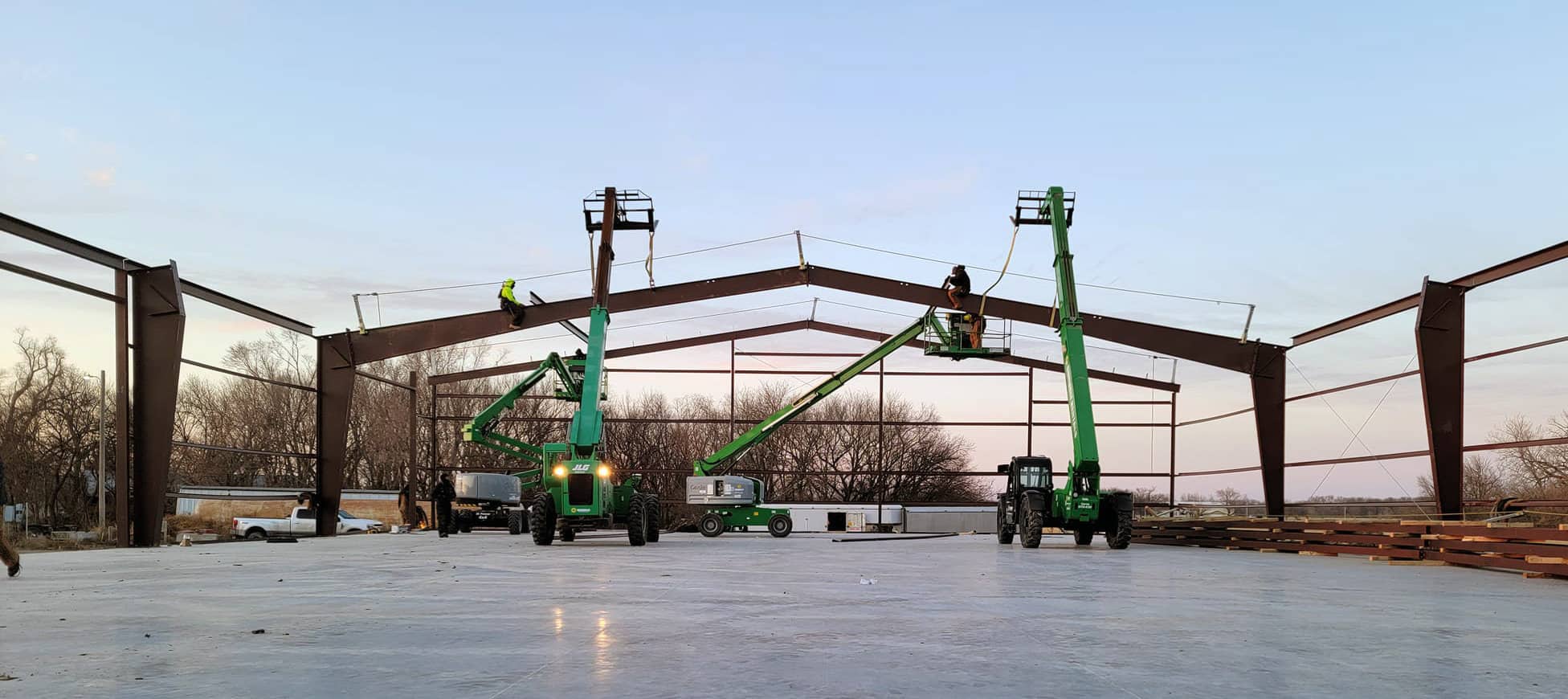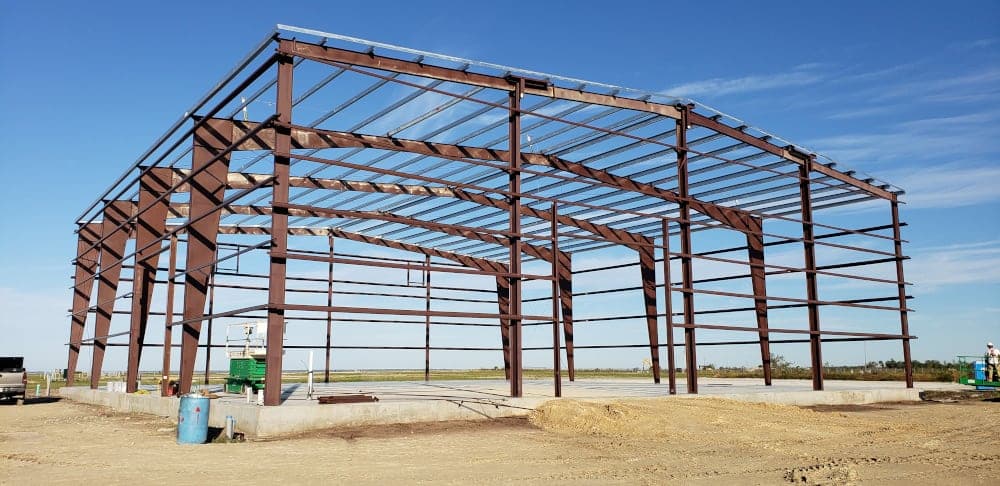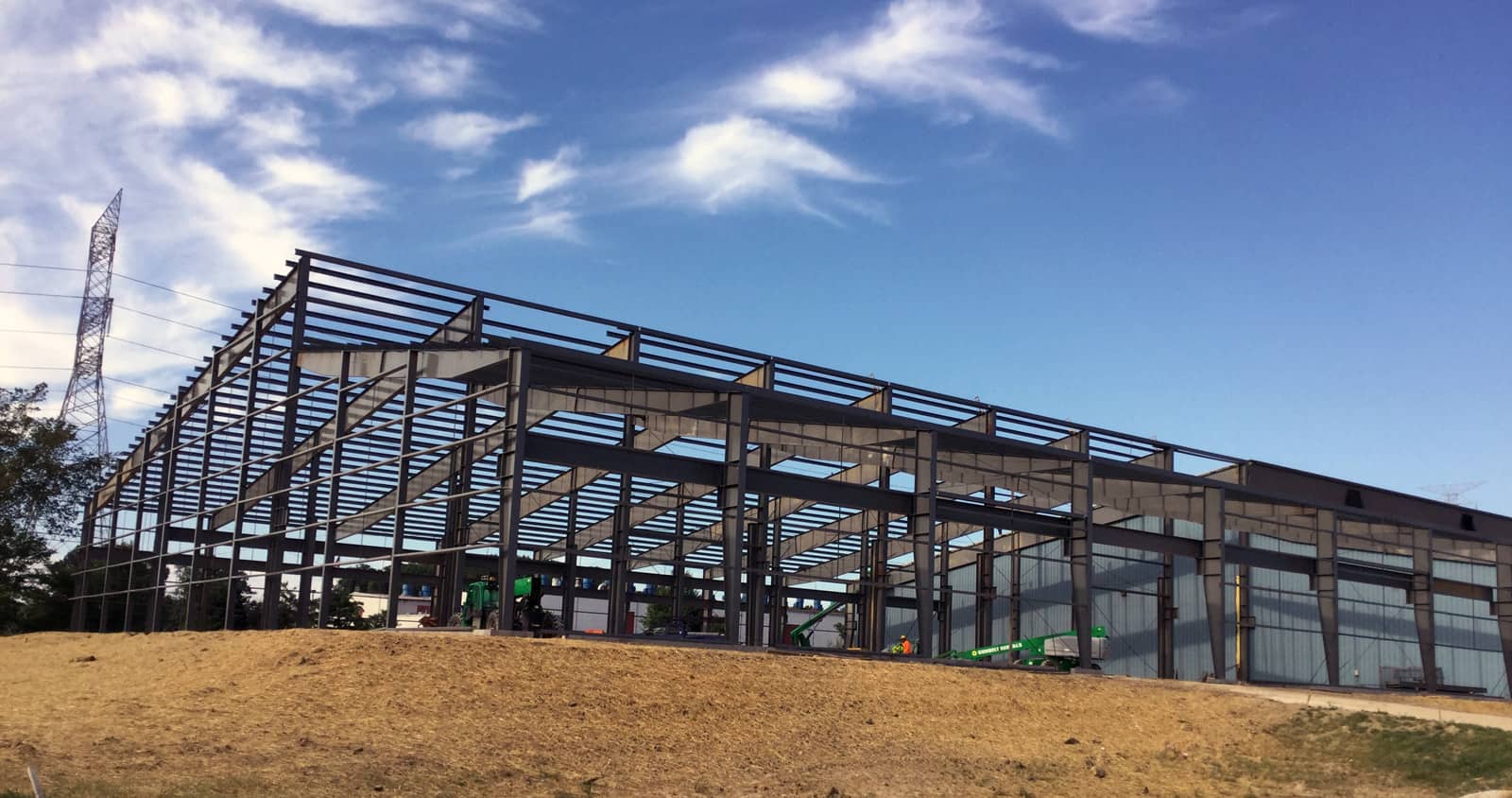Red iron steel is one of the most popular types of steel used for buildings across the globe. Durable and weather-resistant, red iron steel is industrial-grade and designed to exceed the needs of most projects.
COMPARE PRICES & SAVE UP TO 33%
There are many benefits to choosing red iron steel over regular iron. But first, let’s take a closer look at what red iron is.
What Is Red Iron?
Red iron is a special type of steel that’s industrial-grade and designed to withstand extreme weather conditions. Just as its name suggests, red iron has a reddish appearance, and that’s caused by the special coating that’s applied to the steel.

Red oxide is applied to the steel after it’s manufactured, and this coating does more than change the appearance of the steel. It also serves as a barrier to protect it from water.
That extra water-resistance ensures that the steel remains sturdy and durable for years to come. Even in extreme weather conditions, red iron steel remains durable and free of corrosion. That’s why buildings made with this steel can last for several decades without needing extensive renovations. Some of the oldest buildings in the U.S. are made with red iron steel and are still standing strong today.
The red oxide coating also gives the steel a nice red appearance that’s aesthetically pleasing.
In addition to water resistance, red iron steel is also fire- and pest-resistant. Wood structures are vulnerable to rot, termites and other pests that can damage the structural integrity of the building. With steel, pests aren’t an issue.
Steel is also much harder to burn, so there’s less concern of a total loss in case of a fire.
What Types of Structures are Built with Red Iron?
Red iron steel can be used to build many types of structures and is an especially popular choice for prefabricated buildings and kits.
The most common shape of red iron buildings is the I-Beam style. The I-Beam style is so popular with metal buildings because it allows for easier construction and is more DIY-friendly than other shapes.
You’ll commonly find red iron used to create:
- Garages
- Storage buildings
- Agricultural buildings
- Equestrian arenas
- Vehicle storage
- Office buildings
- Warehouses
- Commercial buildings
- Factories and warehouses
Red iron is exceptionally versatile and can be used to construct most types of buildings.
Red Iron Steel Building Strengths
There are many benefits to choosing red steel for your next project, including:
#1 – High Durability
Red iron steel is exceptionally durable and strong. It’s ideal for large structures with long spans and tall heights above 20 feet. It can easily handle heavy loads, and it’s a great solution for large and small projects alike.
If your project includes any of the following, red iron may be the best option:
- Lofts
- Mezzanines
- Second floors
If you’re going to hang heavy equipment from the building, red iron has the strength you need.
#2 – High Weather, Pest and Fire Resistance
Along with its strength and durability, red iron steel is known for its high weather resistance. This is because the iron oxide coating creates a barrier that prevents the water from reaching the steel.
Red iron steel is even more resilient than traditional steel, so it’s a great option for areas with extreme weather.
The I-Beam style frame also helps the structure better withstand high winds and heavier snow loads without damaging the structure or having the roof collapse.
Another great thing about red iron steel is that it’s fire-resistant and pest-resistant. Wood-based structures are vulnerable to termites, rot and mold. Steel doesn’t have these issues. And thanks to the red oxide coating, there’s even less of a risk of rust or corrosion.
It’s not easy for a red iron building to burn to the ground, and that’s why some of the oldest steel buildings in New York are still standing today. It’s a testament to steel’s strength, durability and ability to stand up to extreme weather.
#3 – Easily Customizable
Like most other metal buildings, structures made with red iron steel can also be customized to your liking.
When designing your building, you can customize the placement of windows and doors. Additionally, the strength and durability of the material allow you to install remote-controlled roll-up doors, hydro-swing doors and sliding doors.
The exterior can also be customized to your liking and even be made to look like a traditional stick-built structure.
Exterior options include:
- Wood
- Stucco
- Brick veneer
- Basic metal panels
With so many color and material options, buyers can truly create the building of their dreams.
#4 – Eco-Friendly
Steel is an eco-friendly material. Because of its strength, you don’t need as much material to get the job done. Furthermore, steel can be recycled over and over again. Steel is actually the most recycled material on the planet.
In fact, many red iron steel buildings and kits are made with recycled steel.
Many steel mills only use scrap steel to create new steel. The production uses very little energy, so the environmental impact is minimized.
Once the steel is produced, it can be used forever and recycled indefinitely without impacting its quality.
Another great thing about steel is that it’s easily recovered in the environment because of its magnetic properties. As a result, scrap steel can be removed from water and land quickly and easily with the right equipment, and then used to create new structures or components.
If you’re building a large structure, the environmental impact of the structure should be a big concern. However, you can find peace of mind in knowing that red iron steel won’t have as much of an impact as wood or other materials.
Main Advantages of Red Iron Steel Over Wood

Lumber shortages have many builders concerned about rising material costs. Red iron uses 77% recyclable steel, so there’s no concern about sustainability or exorbitant pricing. High production levels also allow for confidence during construction with less concern of delays, backorders and prices randomly spiking.
When it comes to the frame itself, upward of 60 trees are used in a traditional building’s frame.
Steel doesn’t require trees for framing, so it’s a great option for anyone concerned about sustainability. Furthermore, red iron building offers:
- Sturdy design concept with little-to-no load bearing columns needed
- Resistance to pests, fire and rust
- Strength and flexibility to meet the needs of any project
Naturally, there are some concerns with red steel buildings, such as the material being a natural conductor. However, with the right insulation, the building will remain highly efficient. Many factories and industrial facilities use this material due to its longevity and strength.
With that said, building kits are now in high demand from ]the industry’s leading red iron steel builders, which offers a rapid build and options for smaller buildings.
When discussing building options with a builder, red iron should always be considered.
There are a few ways to determine if red iron steel is the right choice for you or not.
Is Red Iron Steel the Right Choice for You?
Red iron steel is a great option for most projects, but it’s not the right choice for every project. Red iron is a great option if:
- You’re building in an area with extreme snow, rain or wind
- Your budget allows for a slightly higher upfront cost
- You want a structure with a 50-year warranty
- You’re looking for a durable facility that can withstand the elements better than most
- You’re looking to build a larger, clear span building
Red iron building works very well when building column-free spaces, and there’s no need for support posts. When focusing on environmental friendliness during the building process, red iron steel is a good option because it reduces excess waste and also requires less steel.
The cost of red iron building will vary depending on the type of frame used.
For example, if you use I-beam building, the costs are traditionally lower than a C-Channel building. On the other hand, Quonset huts are a middle-of-the-road option with prices often higher than I-beam yet lower than C-Channel.


